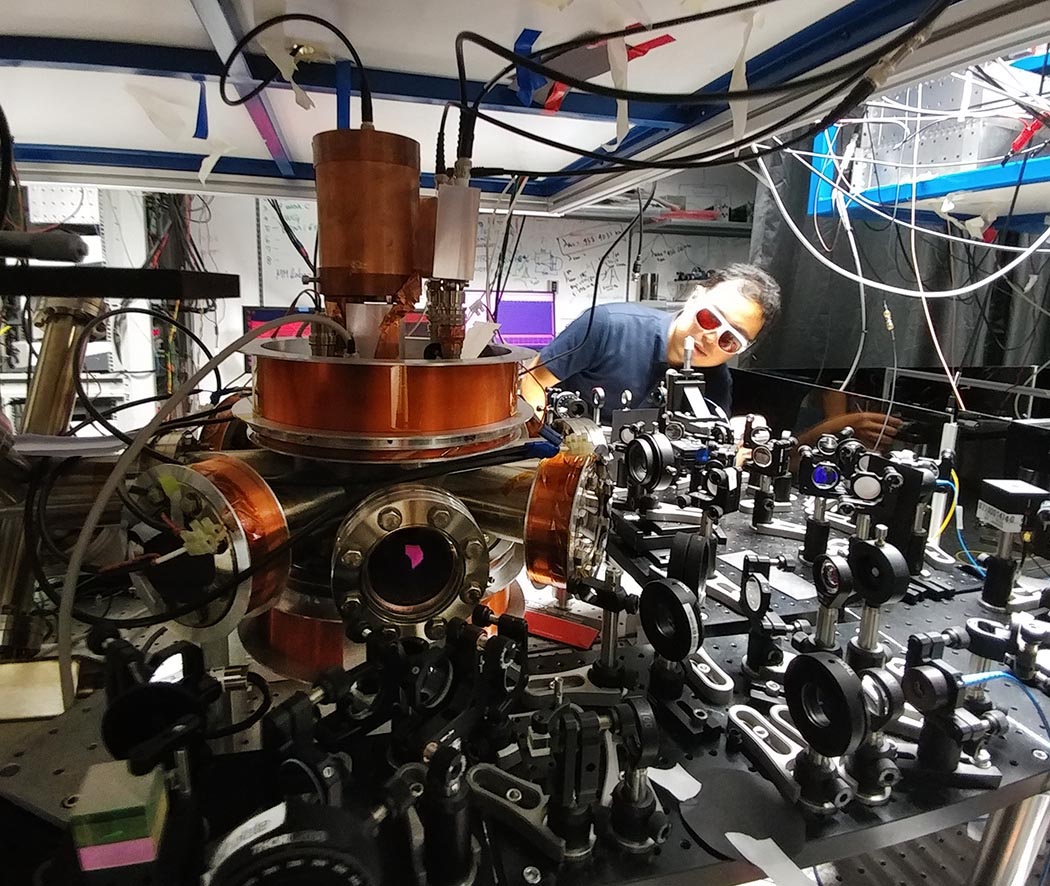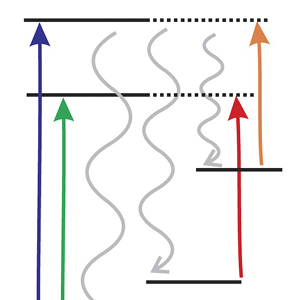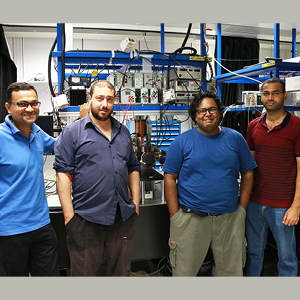Highlights
Barium qubit promising for telecoms
 In this lab at CQT, researchers led by Principal Investigator Manas Mukherjee are testing the potential of Barium atoms to make good qubits. Research Fellow Dahyun Yum, pictured, is first author on the team's latest publication.
In this lab at CQT, researchers led by Principal Investigator Manas Mukherjee are testing the potential of Barium atoms to make good qubits. Research Fellow Dahyun Yum, pictured, is first author on the team's latest publication.
CQT Principal Investigator Manas Mukherjee and his team have built a Barium ion qubit that has fast operation speeds close to telecoms wavelengths. These qubits could be engineered into future quantum repeaters or other network elements that may integrate with existing optical fibre networks.
The team published their findings in the August issue of the Journal of the Optical Society of America B, where the paper is an Editors' Pick.
Flipping fast
Certain wavelengths of light can travel long distances down optical fibres without being absorbed. The telecoms industry divides these wavelengths into bands.
Barium ions interact with light with a wavelength of 1762nm, which is just outside the longest-wavelength U-band, in the infrared.
"People have done this optical qubit before, but we've made it faster," says Manas. With Dahyun Yum, Debashis De Munshi and Tarun Dutta, he measured the Barium ion flipping between its '0' and '1' states some 250,000 times per second, or 250 kHz. Previously the best performing Barium qubit managed only 50kHz.
Shrinking prospects
The team credits new laser systems for their achievement. They designed their experiment to use diode lasers at 1762nm that have only become available in the past few years. Previous experiments used noisier fiber lasers. Another advantage of the all-diode design is that it could be miniaturised into a single system.
For this experiment, the team did not attempt to miniaturise anything (see lab picture), but the group has another project to create chip-based ion traps. They are also working towards systems of a few interacting Barium ions. This work was carried out using a single atom.
Learn more
Related Stories
 | Technique eliminates errors in atomic transition measurements July 22 2016 |
 | Exacting measurements on atoms do better than theory April 22 2015 |






